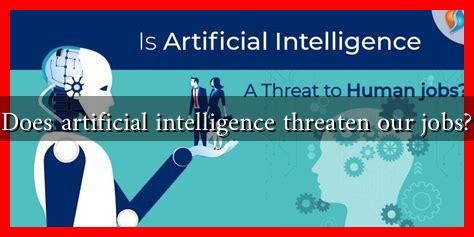-
Table of Contents
Does Artificial Intelligence Threaten Our Jobs?
As artificial intelligence (AI) continues to evolve and integrate into various sectors, the debate surrounding its impact on employment intensifies. While some experts argue that AI will lead to job displacement, others believe it will create new opportunities. This article explores the multifaceted relationship between AI and employment, examining both the threats and potential benefits of this technological revolution.
The Rise of AI in the Workforce
AI technologies, including machine learning, natural language processing, and robotics, are increasingly being adopted across industries. From manufacturing to healthcare, AI is transforming how tasks are performed. According to a report by McKinsey, up to 800 million jobs could be displaced by automation by 2030, affecting nearly one-fifth of the global workforce.
Jobs at Risk: Which Sectors Are Most Affected?
While AI has the potential to enhance productivity, certain sectors are more vulnerable to job loss due to automation. Key areas include:
- Manufacturing: Automation has already replaced many manual jobs on assembly lines. Robots can perform repetitive tasks faster and with greater precision.
- Retail: Self-checkout systems and AI-driven inventory management are reducing the need for cashiers and stock clerks.
- Transportation: The rise of autonomous vehicles threatens jobs in trucking and delivery services.
- Customer Service: AI chatbots and virtual assistants are increasingly handling customer inquiries, reducing the need for human agents.
The Counterargument: Job Creation and Transformation
Despite the potential for job displacement, many experts argue that AI will also create new jobs and transform existing ones. Here are some ways AI can lead to job creation:
- New Industries: The AI sector itself is booming, leading to demand for data scientists, AI specialists, and machine learning engineers.
- Augmented Roles: AI can enhance human capabilities, allowing workers to focus on more complex tasks. For example, doctors can use AI for diagnostics, freeing them to spend more time with patients.
- Increased Productivity: By automating mundane tasks, AI can help businesses grow, potentially leading to job creation in other areas.
Case Studies: Real-World Examples
Several companies have successfully integrated AI while also creating new job opportunities:
- Amazon: While the company has automated many warehouse tasks, it has also created hundreds of thousands of jobs in logistics, technology, and customer service.
- IBM: The tech giant has focused on AI-driven solutions that require human oversight, leading to new roles in AI ethics and governance.
- Siemens: The company has embraced AI in manufacturing but has also invested in retraining programs for employees to adapt to new technologies.
Preparing for the Future: Skills and Education
To mitigate the risks associated with AI, it is crucial for workers to adapt and acquire new skills. Here are some strategies for preparing for an AI-driven job market:
- Upskilling: Workers should seek training in digital literacy, data analysis, and AI technologies.
- Reskilling: Transitioning to roles that require human skills, such as creativity, emotional intelligence, and complex problem-solving, will be essential.
- Continuous Learning: Lifelong learning will become a necessity as technology evolves rapidly.
Conclusion: A Balanced Perspective
The impact of artificial intelligence on jobs is complex and multifaceted. While there is a legitimate concern about job displacement in certain sectors, it is equally important to recognize the potential for job creation and transformation. By investing in education and training, workers can better prepare for the future job market. Ultimately, the relationship between AI and employment will depend on how society chooses to adapt to these changes. For more insights on the future of work and AI, you can visit McKinsey’s Future of Work page.


